Leo W. Gordon
Interested in NMR techniques for studying energy storage and carbon capture systems.
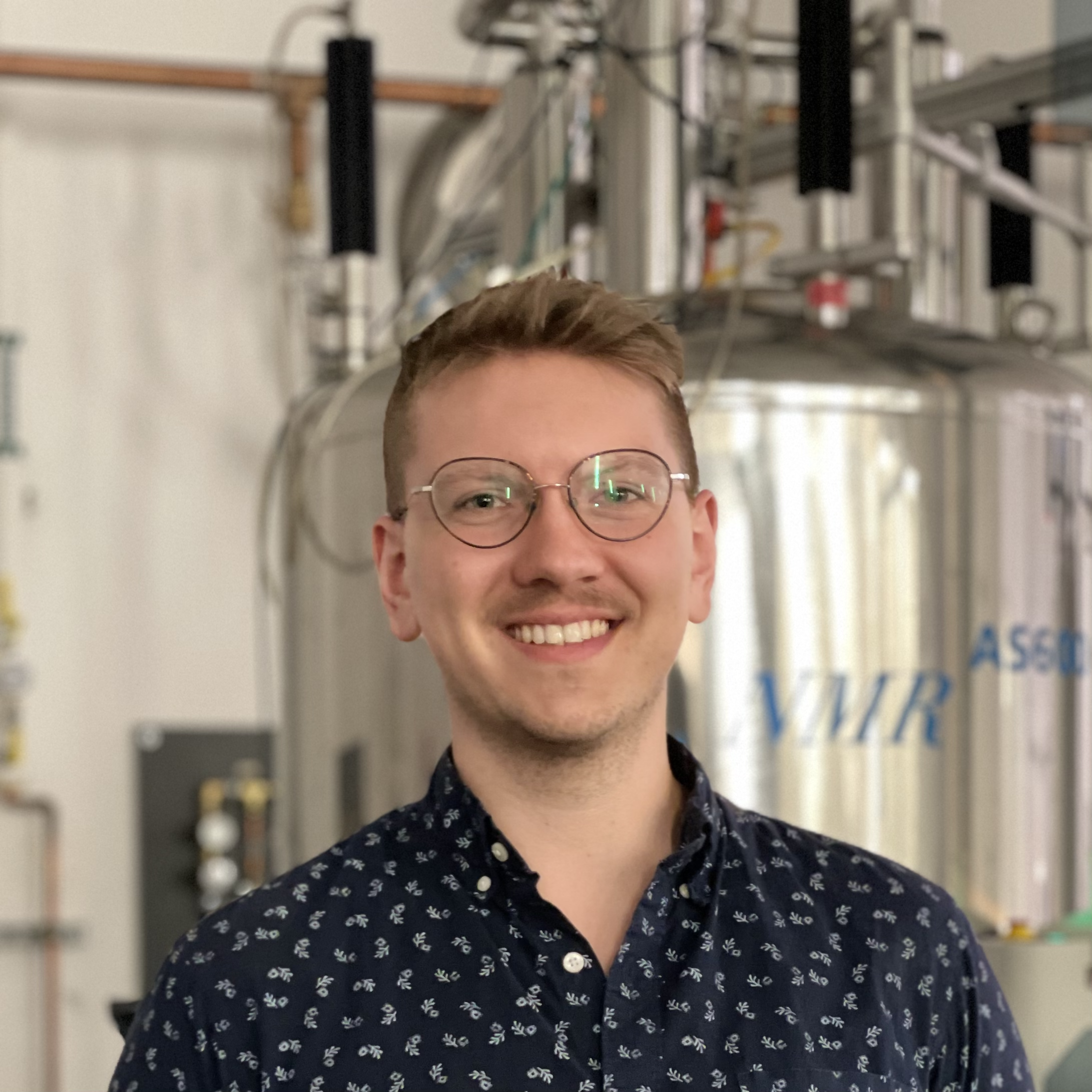
I am a postdoctoral scholar in the Clément group at UC Santa Barbara where I investigate ion transport processes in polymeric materials using NMR methodologies such as pulsed-field gradient and electrophoretic NMR. I recently completed my Ph.D. research at The City College of New York (CCNY) working in the field of energy storage materials where I was advised by Prof. Robert J. Messinger.
The primary focus of my Ph.D. was using NMR characterisation techniques to determine charge storage mechanisms and to understand electrolyte speciation. Solid-state NMR is my main tool for investigating charge storage, which I apply to understand ionic and electronic charge storage mechanisms in organic electrodes for rechargeable aluminium batteries. I also have expertise in liquid NMR, which I have demonstrated through my work on lithium metal battery electrolytes, along with molten salt electrolytes for aluminum batteries. I have further interests in metal anode surface chemistries, lithium cathode recycling, and the nuances of charge storage with different molten salt electrolyte speciations. My central PhD work has culminated in publications including articles in the Journal of Physical Chemistry C, ACS Applied Materials & Interfaces, and the Journal of Magnetic Resonance.
Before joining the Chemical Engineering department at CCNY, I attained an integrated Masters degree in Chemistry (MChem) from the University of Edinburgh, Scotland. During my thesis research I worked to develop and understand novel designs for multi-microelectrode arrays for electrochemical sensing applications. Also during the bachelors portion of my degree, I briefly investigated dye-sensitised solar cells (DSSCs) using plant derived dyes, targeting low-cost and minimally corrosive materials.
In my free time I enjoy bouldering to keep fit, and to make time-saving GUI programs to process data - many of which can be found on my GitHub profile!
News
| May 24, 2024 | We just published a fundamental investigation of selenium structure at different length scales and how it affects the electrochemical reactions achieved in aluminium-selenium batteries. To achieve a full 6-electron capacity of selenium electrodes in aluminium batteries, it is imperative that the Se(0) to Se(–II) is attainable as well as the Se(0) to Se(IV) reactions. This paper documents the viability of the selenium to aluminium selenide electrochemical reduction in glassy selenium, which is seldom observed with crystalline trigonal selenium. This paper challenges the naive assumption that aluminium batteries using sulfur and selenium cathodes would operate in the same way. While both are chalcogens, the bonding topologies of elemental selenium and sulfur are quite different in their most stable forms (trigonal Se chains vs. 8-membered S rings) and this leads to differences in their electrochemical performances. 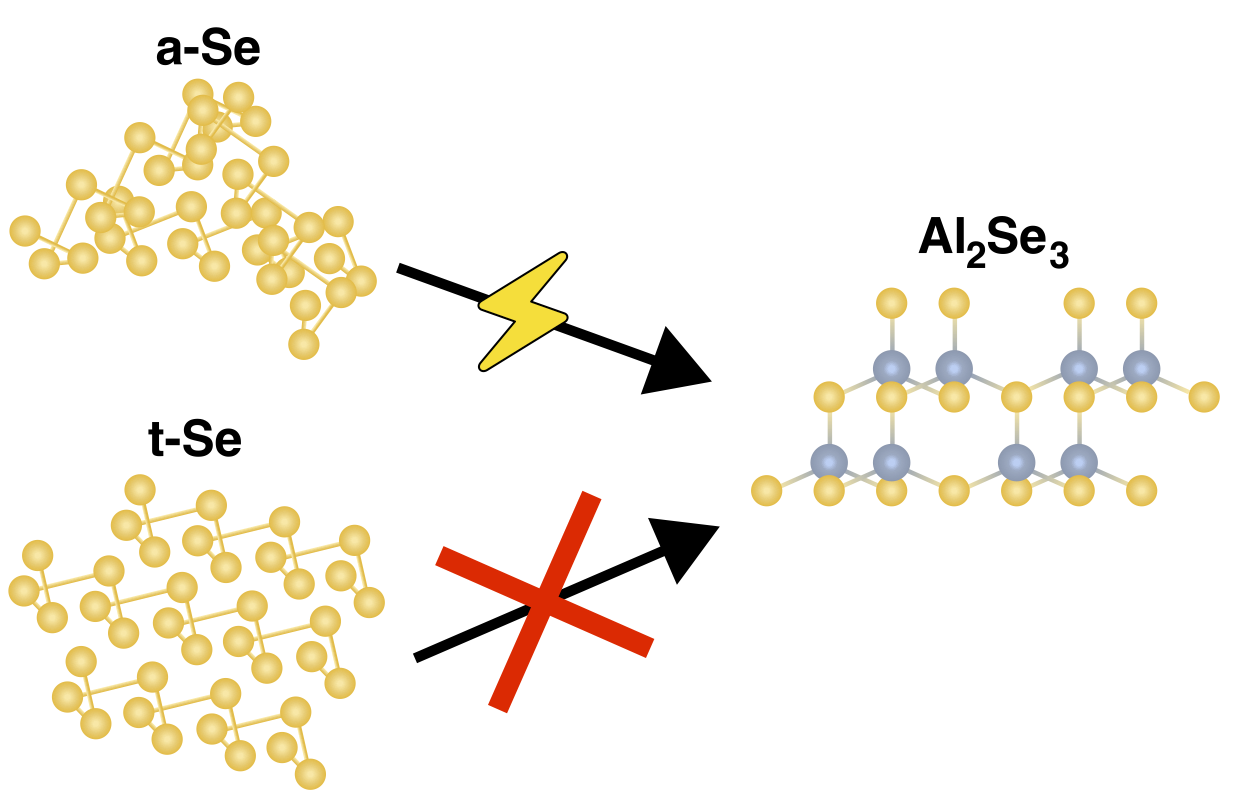 |
|---|---|
| Jan 14, 2024 | Recently a collaborative work with Oi-Man Leung at the Unversity of Southampton was published in Advanced Energy Materials. This study represents a culmination of efforts on both the electrochemistry and applications of this new electrolyte, and also the mechanistic analyses to elucidate the molecular-scale processes within. Here, we demonstrate a huge 0.3 V improvement in the oxidative stability vs. the standard AlCl3-EMIm ionic liquid electrolyte. This increase is coupled with the inherent mechanical improvements of a polymer electrolyte, without any major sacrifice of the electrolyte conductivity. NMR spectroscopy reveals AlCl3 crosslinks between poly(ethylene oxide) (PEO) chains and some curious behvaiour of silica particles in this system… |
| Mar 24, 2023 | Today I sucessfully defended my PhD thesis “Molecular Elucidation of Reaction Mechanisms in Aluminum and Lithium Metal Batteries by Solid-State NMR Spectroscopy and Electrochemical Methods”. My PhD journey has been a greatly enjoyable 5 years and I have far too many people to thank for getting me to this point. However, I must acknowledge my committee members, Prof. Alex Couzis, Prof. Ruth Stark, Prof. George John, Prof. Elizabeth Biddinger, and my advisor Prof. Robert Messinger for their great support today. Special thanks to Rob for all the hard work we put in together! 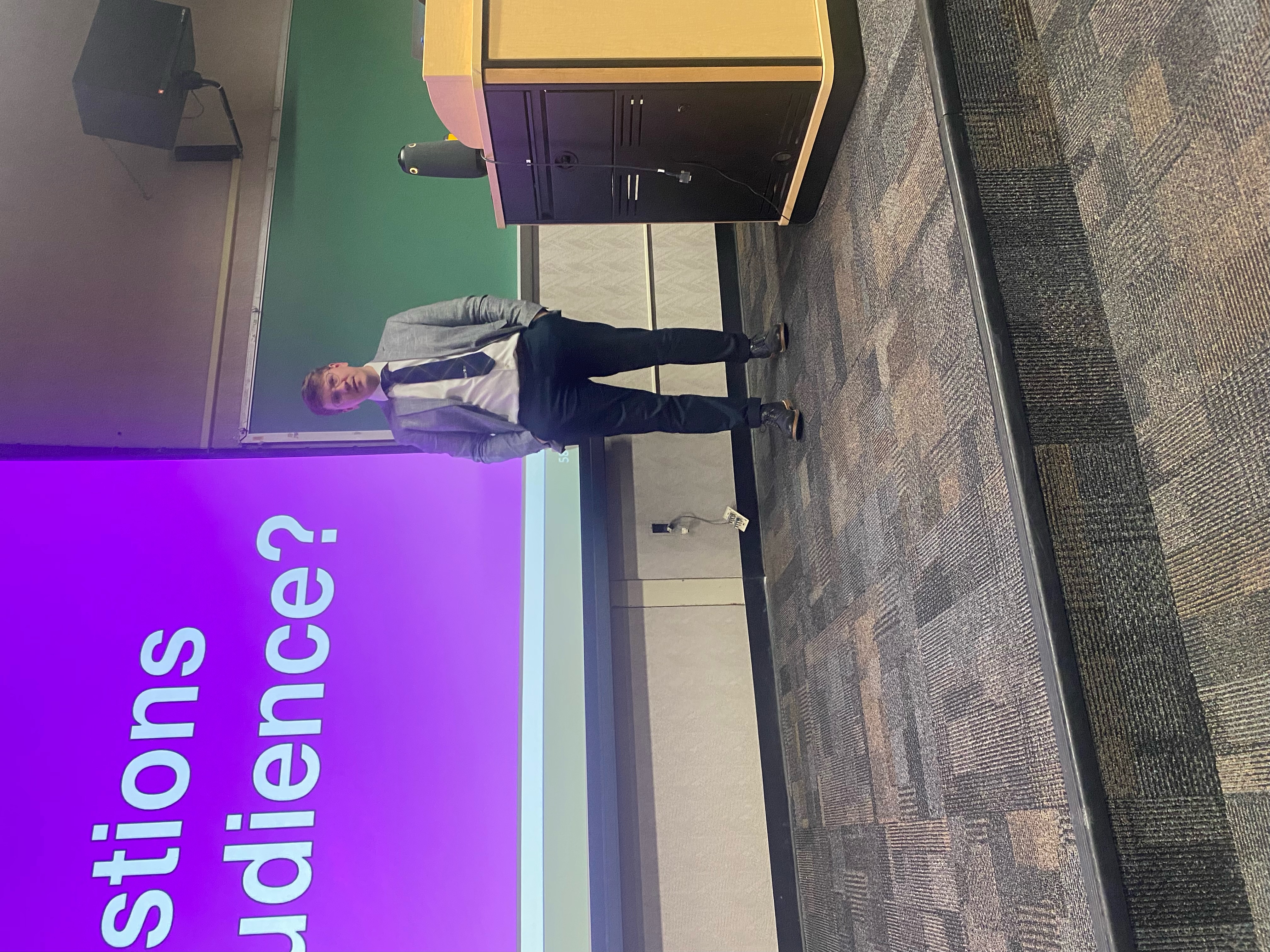 |
| Feb 27, 2023 | The latest work from our group “Reversible Zinc Electrodeposition at −60 °C Using a Deep Eutectic Electrolyte for Low-Temperature Zinc Metal Batteries” was published today. In this work we demonstrate an electrolyte with a deep-eutectic point to enable reversible zinc electrodeposition down to temperatures of -60 °C. We make 0.1 M Zn(TFSI)2 electrolytes in different ratios of [EMIm]TFSI with gamma-butyrolactone (GBL) which are probed electrochemically to determine their macroscopic properties, and further analysed at the molecular level via NMR spectroscopy and molecular dynamics (MD) simulations to explain the differences in performance from an atomistic approach. |
| Jan 25, 2023 | Our new study of aluminium-organic batteries, entitled “Revealing Impacts of Electrolyte Speciation on Ionic Charge Storage in Aluminum-Quinone Batteries by NMR Spectroscopy”, is now out in the Journal of Magnetic Resonance. This is a detailed analysis of the ionic charge storage mechanisms in aluminium-quinone batteries where we begin by detailing the speciation of three different Lewis acidic ionic liquid/ionic liquid analogue electrolytes by liquid-state NMR, we then use solid-state NMR to determine the nature of the complexed ions upon electrochemical discharge in each electrolyte. We further use DFT calculations to both determine the most favorable electroactive cation generation pathways and to link the experimentally derived NMR quadrupolar parameters to a physical basis of ion interaction with different quinone structures. Finally, we also validate our hypothesised mechanisms with targeted experiments, proving the function of various ionic species. 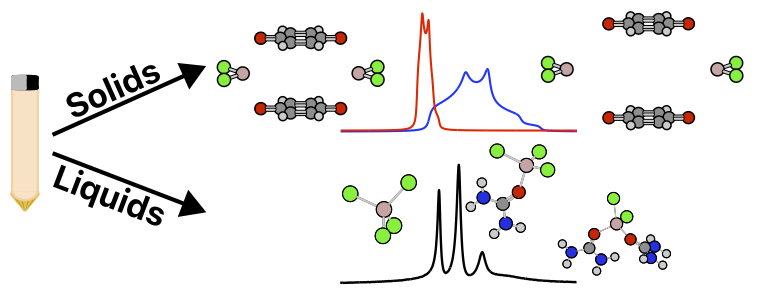 |
| Sep 28, 2022 | The 4th battery and energy storage conference, taking place this year in CUNY’s very own Advanced Science and Research Center building, was a fast-paced and highly engaging few days. Great talks from many people with a variety of topics - from space applications, to cutting edge recycling techniques. |
| Sep 13, 2022 | ECS 2022 was a nice conference with lots of engaging talks, including from Nobel Laureate Prof. Stan Whittingham, who even stopped by the student mixer to mingle with the student members of ECS. It was great to meet a lot of new people, especially finally being able to meet people in person. |
| Aug 16, 2022 | My debut first-author paper came out today, “Molecular-Scale Elucidation of Ionic Charge Storage Mechanisms in Rechargeable Aluminum–Quinone Batteries”. This study puts forward an in-depth analysis of charge storage mechanisms in aluminium-quinone batteries that we expect to be generalisable for all anthraquinone-based materials paired with aluminium-metal anodes in Lewis acidic AlCl3:[EMIm]Cl electrolyte. We used a combination of electrochemical analyses with mutlidimensional solid-state NMR techniques to develop a mechanistic understanding of electronic and ionic charge storage in Al-quinone batteries culminating in a detailed chemical reaction scheme. We also highlight a potential pitfall in sample harvesting and solid-state NMR methods to overcome this challenge. |
| Aug 5, 2022 | Our paper in collaboration with the Juchen Guo group (UC Riverside): “Performance Leap of Lithium Metal Batteries in LiPF6 Carbonate Electrolyte by a Phosphorus Pentoxide Acid Scavenger” was published in ACS Applied Materials & Interfaces today. This work is a culmination of excellent performance of lithium metal batteries and deep, mechanistic understanding. We go beyond just showing the long cycle lifetimes achieved by the addition of P2O5 and show the SEI composition, the electrolyte species present, and develop a feasible reaction mechanism to describe the pathway to producing the moieties responsible for the performance enhancement. The paper can be accessed here. |
| Aug 3, 2022 | I presented a poster at the Global NMR discussions Twitter conference and had a good time learning some new things and engaging with some more of the NMR community. |
| Jul 31, 2022 | I had a great week at RMC 2022 in the Colorado Rocky Mountains where I met and connected with a number of wonderful people and great scientists. I feel very grateful to have been awarded a travel stipend to support my attendance so I could discuss the groundbreaking understanding we have been developing in aluminum-organic batteries! 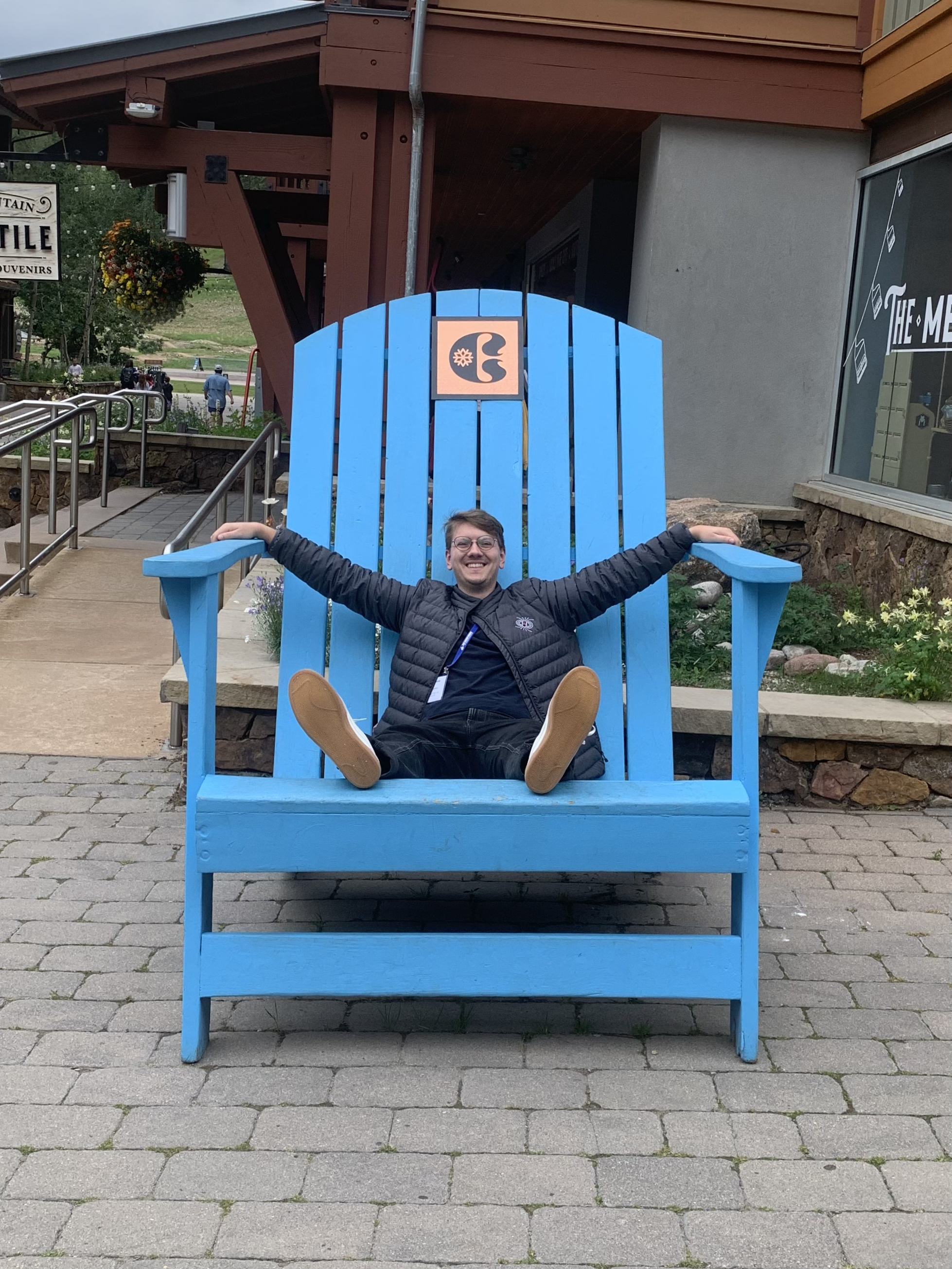 |
| May 9, 2022 | Our ACS Chemistry of Materials paper entitled “Soluble Electrolyte-Coordinated Sulfide Species Revealed in Al–S Batteries by Nuclear Magnetic Resonance Spectroscopy”, led by Dr. Rahul Jay and Dr. Ankur Jadhav, was published. The study probed the different species present through solid-state NMR techniques on a multiphase sample containing both solid and liquid and species. The final paper can be found at this link. |
| May 1, 2022 | Attending this year’s ENC was a highly memorable experience, full of interesting science and lasting memories! I was very happy to be awarded the student travel stipend from Norell, which supported me to present my work on modifications for lithium metal battery electrolytes. I had a lot a great engagement with my work from all over, both from people within the field and from some with no relation to batteries. I’m thankful for all the new people I met, and hope to keep in touch – I’ll see you at the next one! 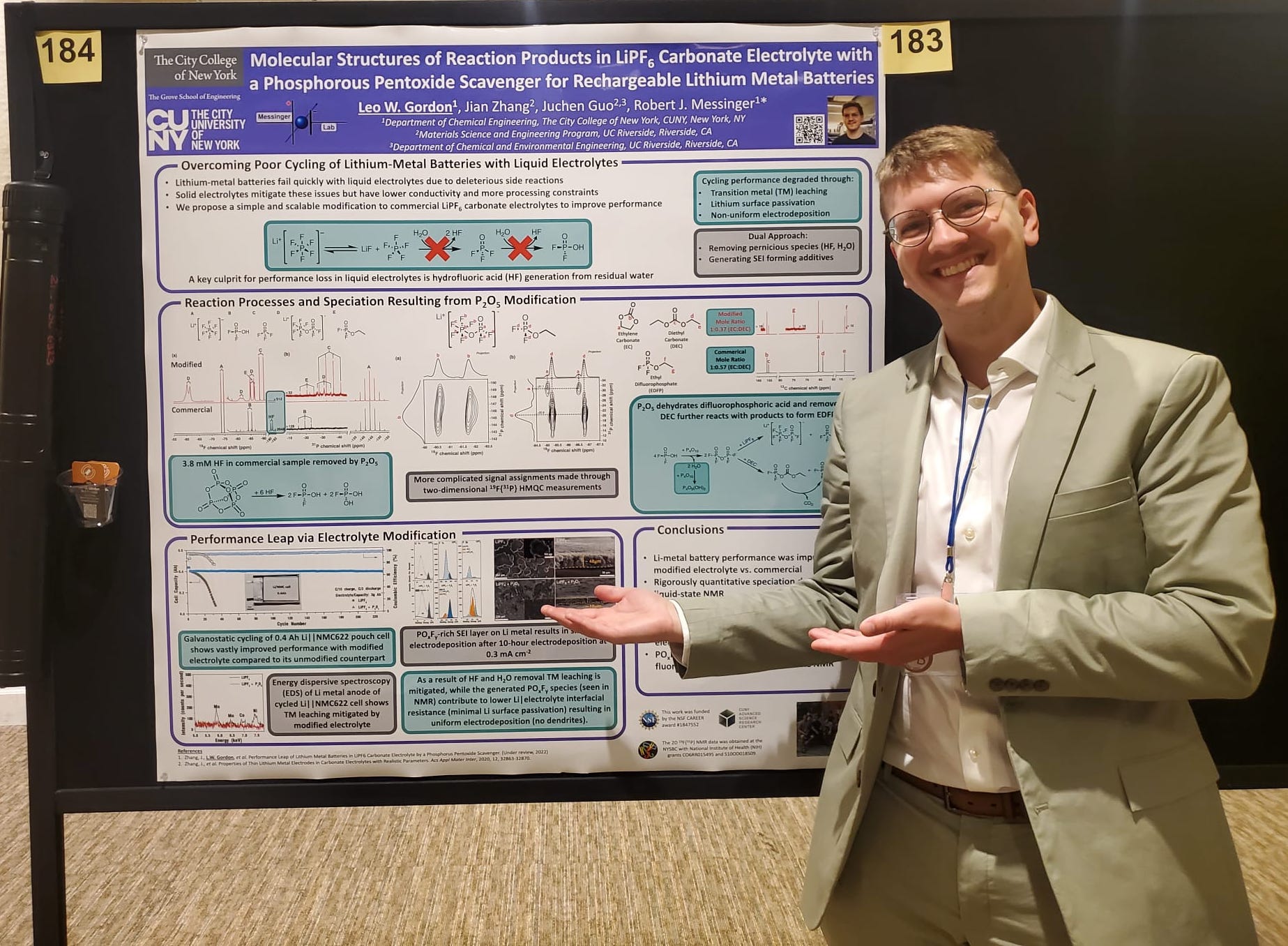 |
| Mar 3, 2022 | I was awarded a travel stipend to present my work on modified lithium-metal battery electrolytes at the Experimental Nuclear Magnetic Resonance Conference (ENC) this April. This is my first presentation of liquid-state NMR work that was performed in collaboration with the Guo group at UC Riverside and I’m excited to share this thorough study of performance enhancing modifications to liquid electrolytes for lithium-metal batteries. |
| Feb 14, 2022 | Today, the paper “Disentangling Faradaic, Pseudocapacitive, and Capacitive Charge Storage: A Tutorial for the Characterization of Batteries, Supercapacitors, and Hybrid Systems” by the very talented Dr. Theresa Schötz was accepted in Electrochimica Acta, with me as second author. The pre-print is live, find the paper with this link. |
| Feb 1, 2022 | As of today my website is live. Here I will update projects I have worked on, alongside works I have published. |
| Nov 12, 2021 | In the first in-person conference since the COVID-19 pandemic began, I had the opportunity to talk about my work regarding fundamental understanding of small organic molecules and their complexing ions in my oral talk: “Charge Storage Mechanisms of Quinone- & Flavin-Type Organic Electrodes for Rechargeable Aluminum Batteries Elucidated with Molecular-level Specificity”. This was presented at the Fall 2021 American Institute of Chemical Engineers (AIChE) conference. |
| Oct 10, 2021 | I presented a poster at the Fall 2021 Electrochemical Society (ECS) meeting discussing electrochemical mechanisms of quinone charge storage in aluminium batteries with my presentation, “Electrochemical Complexation of Polyatomic Aluminum Cations in Quinone-type Organic Battery Electrodes Revealed by Solid-state NMR”. |
| Mar 30, 2021 | At the 2021 Experimental Nuclear Magnetic Resonance (ENC) conference, I presented a poster entitled “Molecular-level Insights into the Charge Storage Mechanisms of Rechargeable Aluminum-Indanthrone Quinone Batteries Revealed by Solid-state NMR Spectroscopy”. This showcased our most recent developments in understanding of aluminum-quinone systems through the use of multi-dimensional ssNMR. |
| Oct 21, 2020 | In my poster “Molecular-level Investigation into the Charge-storage Mechanisms of Rechargeable Aluminum-organic Batteries”, I discussed differences between charge storage mechanisms of different classes of organic electrode materials. This work was presented at the second NYC AIChE Battery and Energy Storage workshop, 2020. |
| Oct 9, 2020 | We highlighted our expertise in solid-state NMR to study novel organic electrodes for aluminium batteries in a poster entitled “Electrochemical Performance and Charge Storage Mechanism of Flavin-like Organic Electrodes for Rechargeable Aluminum Batteries”, presented at the Fall 2020 Electrochemical Society (ECS) meeting. |
| Aug 10, 2020 | I passed my PhD candidacy exam, presenting my thesis proposal on the use of NMR characterisation techniques, particularly in the solid state, for the analysis of organic energy storage materials and understanding of their charge storage mechanisms. |
| Oct 21, 2019 | I presented my poster “Rechargeable Aluminum Batteries Using Organic Cathode Materials with High Cycle Life and Capacity” at the first NYC AIChE Battery and Energy Storage workshop. This poster offered insight to charge storage in aluminium-flavin batteries. |
Selected Publications
- Improved Mechanical Strength without Sacrificing Li-Ion Transport in Polymer ElectrolytesACS Macro Letters
May 2024
- Molecular-Scale Elucidation of Ionic Charge Storage Mechanisms in Rechargeable Aluminum–Quinone BatteriesThe Journal of Physical Chemistry C
Aug 2022
- Performance Leap of Lithium Metal Batteries in LiPF6 Carbonate Electrolyte by a Phosphorus Pentoxide Acid ScavengerACS Applied Materials & Interfaces
Aug 2022
- Disentangling Faradaic, Pseudocapacitive, and Capacitive Charge Storage: A Tutorial for the Characterization of Batteries, Supercapacitors, and Hybrid SystemsElectrochimica Acta
Apr 2022